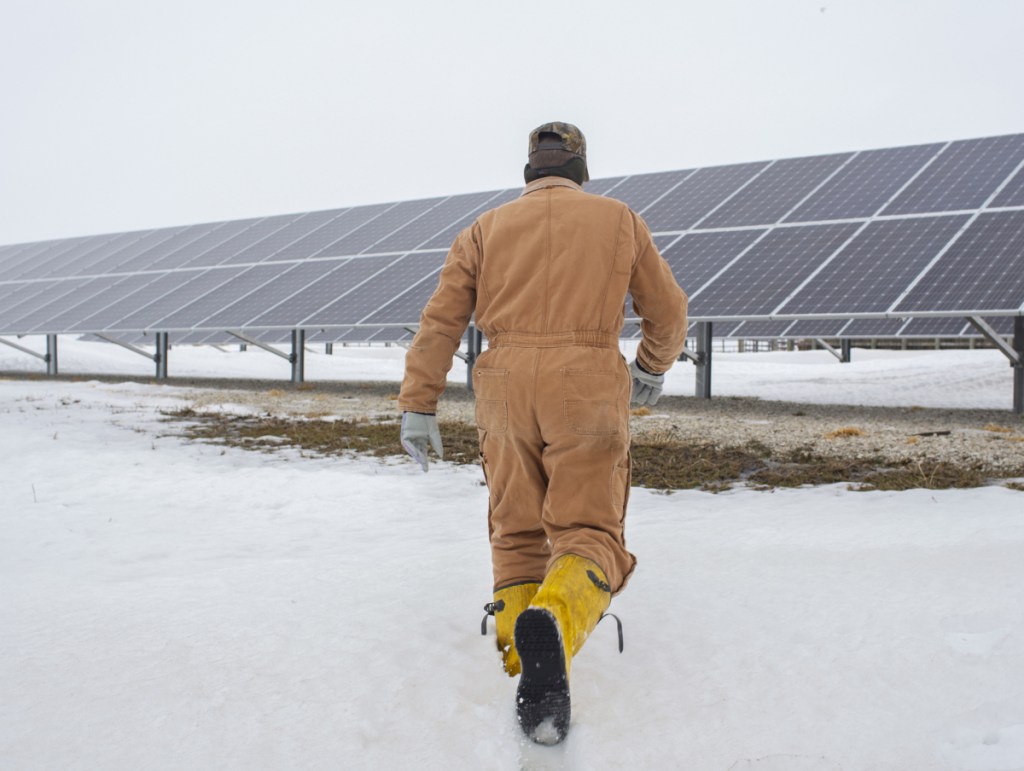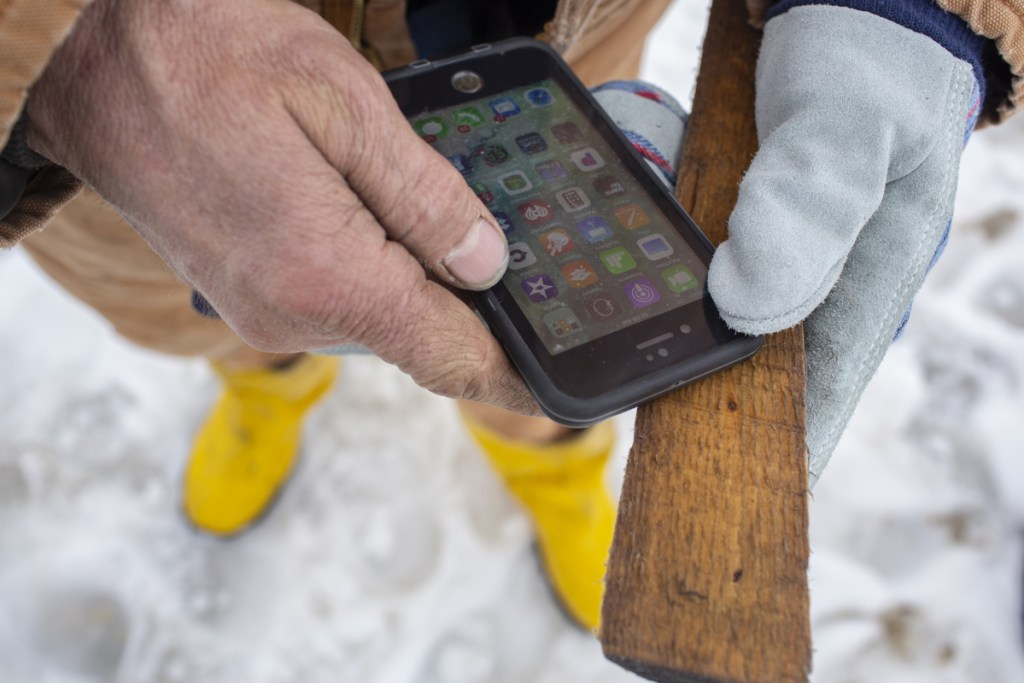ORION, Ill. — Randy DeBaillie pointed to the power meter on his snow-covered farm: Even on a foggy, monochromatic day, with the sun barely piercing the clouds, the flat black panels planted nearby in two long rows were generating electricity.
“There’s enough energy produced to run the whole complex,” said DeBaillie, 50, who farms 6,500 acres with his brother and cousin. They typically grow corn and soybeans each spring, but this year they want to put more solar panels on 15 acres – and sell the energy.
The earnings, he said, would be about three times what an average harvest would yield there.
Across the flatlands of Illinois, a new “crop” is rising among the traditional waves of grain as farmers increasingly make the same calculation as DeBaillie. Hundreds have applied to host acres of solar panels on their property, a move encouraged by a state law requiring that renewable resources provide 25 percent of Illinois power by 2025. The shift is controversial, and not just because of how it could alter the pastoral landscape. Taking some of the most fertile soil in the world out of production could have serious consequences for a booming population.
Yet farmers point to the uncertain economics of their lives and the need to have other income. Prices last year for the state’s most prominent crops were far below original projections, with data showing corn 7 percent lower and soybeans 15 percent lower. The Trump administration’s trade war with China triggered the steep drop in soybean prices. Climate change is also spurring some farmers to rent acreage for solar panels, as a way to help combat global warming. “I like to believe I’ve done a small part in trying to slow that process down,” DeBaillie said.
The consequences for agriculture are stark.
According to the federal government’s Fourth National Climate Assessment, released in November, more extreme high temperatures plus increased humidity and precipitation could mean more pests and pathogens on farms throughout the Midwest in the coming decades. Productivity could drop to levels not seen since the 1980s, the report warned.
In Carlyle, Illinois, about an hour east of St. Louis, retired farmer Kevin Krebs hopes to add to the small plot of panels he installed in 2018 for personal use. Having more solar panels could benefit his retirement as well as the planet.
“You don’t have to burn no coal. You don’t have to burn no oil. You don’t have to burn no gas,” said Krebs. “You get it from the sun and let it do its thing.”
Three solar panel projects are available under the state program and come in different sizes. The smallest caters to residential properties or small businesses, with panels often placed on rooftops. Medium-size projects, known as community solar, require panels over about 15 acres and typically produce about 2 megawatts of power. That’s enough to power up to 2,000 homes. The largest undertakings can cover hundreds to thousands of acres and operate almost like an individual power plant. Proposals for midsize projects have become so popular that Illinois is hosting a lottery to determine who will be awarded contracts to sell solar electricity to large power companies in the state, which then deliver it to subscribers.
Still, some worry that farmers are embracing solar panels without thinking enough about what will be lost.
“The soils here in Illinois are some of the most productive soils in the world,” said soil scientist Robert Rhykerd, chairman of the department of agriculture at Illinois State University. The harvests help to feed a global population the United Nations estimates will rise to 9.8 billion by 2050 – up from 7.6 billion in 2017.
Send questions/comments to the editors.




Success. Please wait for the page to reload. If the page does not reload within 5 seconds, please refresh the page.
Enter your email and password to access comments.
Hi, to comment on stories you must . This profile is in addition to your subscription and website login.
Already have a commenting profile? .
Invalid username/password.
Please check your email to confirm and complete your registration.
Only subscribers are eligible to post comments. Please subscribe or login first for digital access. Here’s why.
Use the form below to reset your password. When you've submitted your account email, we will send an email with a reset code.